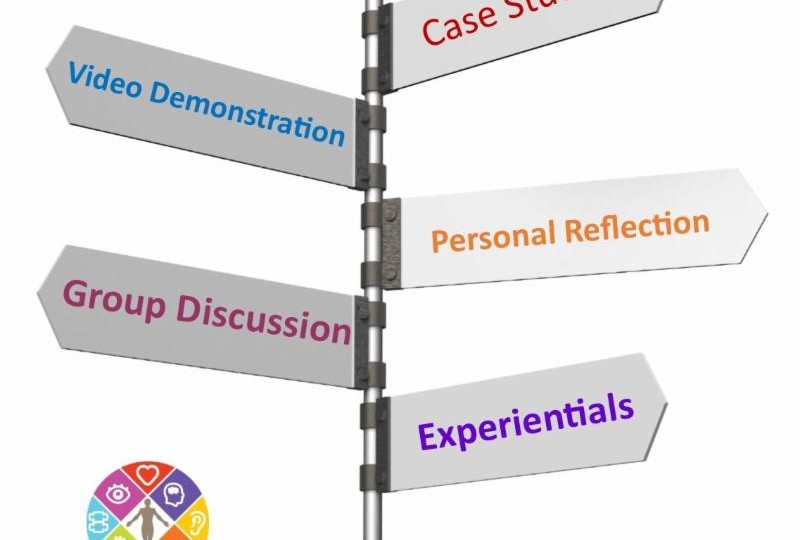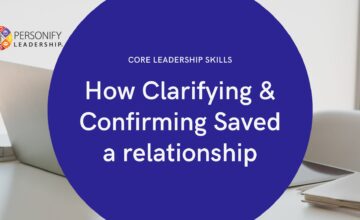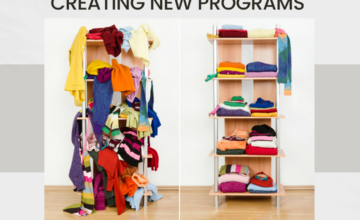Blending the Traditional with the Exceptional
- Sep 01, 2015
- By personifyadmin
- In Newsletters
- 0 Comments
5 Methods of Learning
When you think of corporate classroom training, what visual pops into your head? Lecture and Death by Power Point? We’ve all been victim to the long, boring training that is disengaging and leaves us secretly checking emails or cruising Facebook under the table. At the end of the training, you may remember a few nuggets of wisdom from the presentation, but because you didn’t actively participate in the learning you will most likely not retain much. The intent behind this style of training is good: teaching new skills. The method of delivery is what needs work. What it needs is multiple methods of engagement.
Traditional training methods that are more engaging are Video Demonstrations, Case Studies, Personal Reflection, and Group Discussion. These different methods are definitely a step above the Lecture and Power Point methods. At Personify Leadership we add in what we consider an exceptional teaching method, Experiential Learning. Our approach is a blend of all of the Traditional methods with the Exceptional. Today we are going to explore why a mix of these methods provide a healthy learning environment, that will engage the adult learner and drive new skills learned to application.
First, let’s break down each of the Traditional Methods.
Video Demonstration
Video Demonstration is a great way for learners to see new skills in action. This method gives the opportunity to see examples of leaders doing it right as well as examples of leaders doing it wrong. Video demonstrations help participants to connect concepts to application. As human beings we love stories. Videos provide a way for leadership skills to be brought to life.
In our Feet of a Leader module, we talk about Mirror Neurons and how humans will mimic the behaviors of others. Our brains are literally wired to experience emotions and behaviors of others through observation. Video Demonstrations provide opportunities to see exemplary examples of leadership in real life scenarios and allow us to see leaders at their best. Videos give opportunities to transfer knowledge into application.
Group Discussion
Through group discussions, participants have the opportunity to share their expertise as well as learn from others. Processing thoughts out loud allow learners to develop insight skills and create purpose and meaning out of a newly learned concept. Group dialog can also help learners take advantage of teachable moments. Sharing these thoughts with others help form connections to both the concepts and the other leaders.
Personal Reflection
We all process information at a different pace. Some of us like to process out loud, others need a quiet space and time to process through what was learned. In today’s high paced society, personal reflection is not common practice. The art of journaling is all but a lost art. We have more things today that pull at our attention than ever before, which makes carving out time for personal reflection all but impossible. In our course we provide multiple opportunities for Personal Reflection. We believe this is a key element to personalize the new skills learned to each leader’s personal leadership journey. This allows the need-time-to-process people space to absorb what they are learning. This also allows the think-on-my-feet people the opportunity to slow down and reflect at the same time. This method also provides leaders the opportunity to apply what they have learned to their own situation for increased self-awareness and improvement.
Case Studies
Leaders want to know how competencies apply in the real world. Case studies give learners the opportunity to transfer knowledge into application. The best case studies come from actual events or scenarios in the workplace that learners can evaluate, dissect and discuss. In doing this, learners can see themselves and others in the challenge and they can see the opportunity to make different decisions using new skills but it isn’t about them, and therefore it’s less personal. Sometimes learning through the experience of others feels safer and eases us into the learning experience.
Now that we’ve discussed the Traditional methods, let’s discuss the Exceptional.
Experiential Learning
Plato was once quoted as saying, ‘I can learn more about a person in an hour of play, than a lifetime of conversation.’ Usually how a person ‘plays’ in an activity will often predict how a person behaves or ‘plays’ in the real world. Experiential activities allow for individuals to experience a behavior in real time and then immediately process the intent and outcomes of their behaviors. These activities allow the behaviors to surface naturally, which allows the learning to be that much more powerful when the behaviors are addressed. Even more when you can teach a new skill to replace a behavior that may not be seen as a positive behavior.
In some instances we use Experientials before we teach new skills to surface behaviors. In other instances we use Experientials after we teach new concepts to provide opportunities to practice new skills. Either way the experiential process allows the participant to not just envision what it would be like, but to experience what it would look like in the real world. This process drives to application, which in reality, is the true purpose behind training. We want to motivate individuals to transfer their learning to application on the job.
Experiential Caveat: Integration is key. Experientials on their own can be lost opportunities for learning. For example, in the Eyes of a Leader module we talk about Vision. One of the learning outcomes of this module is skills around Goal Setting and identifying what could possibly get in the way of achieving your goals. To do this, we have the group start out with an experiential activity that sounds very easy to accomplish, but in reality it is a very difficult task to achieve. Most of the time the group will quickly move farther away from their goal rather than towards their goal. Frustration and poor communication are probable outcomes. The transition for success in the activity requires a great deal of attention and focus from the group. Once they achieve success, we debrief the experience and have the group identify the key behaviors it took to accomplish to goal. We do this intentionally to set the group up for a conversation around how easy it can sound to set goals and achieve them, but in reality there are many ‘drains’ or barriers that can get in the way. After the group has this experience, we then move into the classroom for skill development. We introduce a model that helps them identify what their goals are and what it takes to achieve them. We also have them identify what the potential barriers or ‘drains’ are that could prevent them from achieving their goals.
By integrating the experiential with the traditional, individuals walk away with a more powerful experience that translates to on the job application. If we would have just presented the model and talked about it, they may or may not have taken it too seriously. But by experiencing the drain model come to life in the experiential, there is a high probability that participants will better identify with their potential drains. As a result, participants will set themselves up for success when setting realistic goals.
Like any great recipe, it takes the right ingredients to make a masterpiece. At Personify Leadership, we firmly believe that a mix of all 5 of these methods make for an exceptional learning environment. Our differentiator is the experientials, however it’s the mix of all of these methods that translate to on the job application.





Recent Comments